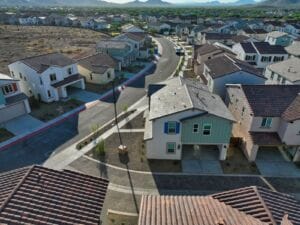
Have you ever reflected upon your adolescent years and recalled how dynamic and confusing life and the world could be? For many, it was a challenging time with a mix of emotions and experiences as they learned to balance the social, emotional and physical changes endured as they evolved from children into adults.
Life was complex, unpredictable, rich with highs and lows as one transformed into their changing bodies and more complex social systems. At times it was scary and uncomfortable, yet with the discovery of new possibilities, it could also be exciting and exhilarating.
Similarly, Phoenix is a community in the midst of an awkward, yet exciting urban evolution. Responding to market forces and an emerging generation’s desire for a more vibrant, walkable city, Phoenix is transitioning from a suburban town into a next generation, urban city. Trying to define its new identity in the world, Phoenix and its residents must navigate many fundamental challenges. As Metro Phoenix continues to grow in popularity and population, neighborhoods throughout the region will grapple with intensification and densification as infill development, adaptive reuse and redevelopment takes place. Established Central Phoenix neighborhoods struggle with issues such as balancing parking requirements and traffic patterns, innovative indoor/outdoor urban restaurants and gathering places. Increasingly, these scenarios are spurring debates between neighbors, business owners and city staff. For example, who should have access to public streets for parking or traffic? The conversation is not limited to Phoenix, nor is parking and traffic the only concern relative to infill, adaptive reuse and redevelopment. It’s a Pandora’s box that includes discussions about higher density residential development, adequate infrastructure to support greater intensity, alternative public transportation and multimodal systems. More importantly, who is going to pay for it?
Regardless of topic, the key to successfully integrating new land uses into the established community fabric – especially those that are innovative and creative – is a clear vision for what the city wants to become, followed by a paradigm of open communication, collaboration and a flexible regulatory environment that facilitates a balanced conversation between all stakeholders involved…the municipalities, neighbors, businesses and developers.




